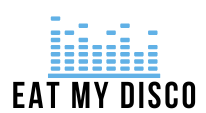In a world where online shopping carts seem to have a mind of their own, a spending detox might just be the financial cleanse everyone needs. Imagine your bank account feeling lighter and your wallet thanking you for a much-needed break from impulse buys. It’s time to put down that overpriced artisanal avocado toast and reclaim control over your finances.
Table of Contents
ToggleWhat Is Spending Detox?
Spending detox is a financial strategy that encourages individuals to pause or limit their non-essential purchases. It serves as a break from habits that lead to unnecessary spending. Participants in a spending detox focus on evaluating and identifying their spending triggers. This evaluation often reveals patterns that contribute to financial strain, such as impulsive online shopping or frequent dining out.
Many people struggle with separating wants from needs; a spending detox aids in this distinction. By intentionally reducing expenditures, individuals can gain control over their finances. Financial experts recommend setting a specific timeframe for this detox, such as 30 days, to create a structured challenge. Tracking daily spending can enhance awareness and increase accountability.
Psychological benefits accompany the financial advantages of a spending detox. Gaining a sense of accomplishment often improves self-discipline and fosters mindful spending habits. Participants may also experience reduced stress related to financial obligations. Long-term financial health benefits emerge as individuals learn to prioritize necessary expenses over luxuries.
Engaging with communities or support groups focused on spending detox can deepen the experience. Sharing insights and strategies with others creates collective motivation. Furthermore, participants can celebrate small victories, enhancing their commitment to the detox process. Ultimately, a spending detox proves to be a transformative journey towards healthier financial habits and improved overall well-being.
Benefits of Spending Detox
A spending detox provides multiple advantages, impacting both financial health and mental well-being.
Improved Financial Awareness
Participants gain insight into their spending habits. Tracking expenses uncovers hidden patterns individuals might not notice otherwise. Recognizing triggers for impulsive purchases becomes easier. Greater awareness leads to informed decisions when choosing purchases. Individuals learn to differentiate between needs and wants. This clarity promotes conscious spending, which aligns with financial goals. Setting a specific detox period, like 30 days, encourages continuous evaluation of one’s finances. Ultimately, this experience empowers individuals to make healthier financial choices long term.
Reduced Stress Levels
Stress related to financial obligations often decreases during a spending detox. Individuals experience relief from the pressure of maintaining excessive spending. Stripped-back expenses create a sense of freedom and calm. Participants find that focusing on essentials fosters simplicity in daily life. Additionally, improved financial awareness contributes to anxiety reduction. Engaging in discussions with support groups enhances motivation and community spirit. Celebrating even small victories provides encouragement along the detox journey. As participants cultivate healthier attitudes towards money, an overall sense of well-being emerges.
How to Start a Spending Detox
Starting a spending detox requires a strategic approach. It entails setting clear goals and tracking expenses to gain control over spending habits.
Set Clear Goals
Establishing specific goals sets the foundation for a successful spending detox. Participants can define what they aim to achieve, like reducing debt or saving for a particular item. Clarity in objectives enhances motivation. For instance, aiming to save $500 in 30 days can create a tangible target. Break larger goals into smaller, manageable steps, such as restricting dining out to once a week. Commitment to those goals drives accountability and makes it easier to evaluate progress throughout the detox period. Additionally, sharing goals with friends or family boosts support and engagement.
Track Your Expenses
Tracking expenses offers insights into spending habits. Participants can use apps or spreadsheets to record daily purchases systematically. Documenting every transaction highlights patterns that contribute to unnecessary spending. Reviewing these records helps identify triggers for impulsive buys. Regular assessments allow for adjustments in spending strategies. A daily review can reinforce awareness and discipline. For example, noticing frequent small purchases can reveal significant cumulative spending over time. This awareness fosters informed decision-making, ultimately enabling more conscious spending aligned with financial objectives.
Tips for Successful Spending Detox
Implementing effective strategies enhances the success of a spending detox. Here are some targeted approaches.
Create a Budget
Crafting a budget serves as a fundamental tool in the detox process. List essential expenses such as rent, utilities, and groceries to prioritize needs. Allocate a specific amount for non-essential items, ensuring you limit overspending. Regularly review and adjust the budget based on progress and circumstances. Using budgeting apps can simplify tracking and help maintain discipline. Set aside time each week to analyze spending patterns and reflect on financial goals. Focused budgeting fosters awareness and promotes more conscious spending habits.
Find Alternatives to Shopping
Exploring alternatives to shopping offers healthier outlets for emotional or social needs. Engaging in hobbies like reading, cooking, or exercising diverts attention from impulsive purchases. Organizing social activities with friends, such as game nights or potlucks, can provide enjoyment without spending. Volunteering not only fulfills a sense of community but also distracts from the urge to shop. Starting a DIY project encourages creativity and resourcefulness while reducing the desire to buy new items. Substituting shopping with fulfilling activities cultivates healthier habits and reinforces the goals of a spending detox.
Common Challenges and How to Overcome Them
Spending detoxes often come with challenges. Understanding these obstacles enhances the chances of successful outcomes.
Impulse Buying Temptations
Impulse buying remains one of the most formidable challenges. Retailers heavily market promotions, creating environments that entice spontaneous purchases. Setting aside time for mindful reflection can create awareness before buying. Keeping a list of wants versus actual needs helps prioritize essential items. Delaying purchases by 24 hours often allows individuals to reconsider their decisions. Utilizing apps designed for budgeting can assist in monitoring spending habits. Engaging in activities unrelated to shopping helps redirect focus from enticing offers. Developing new routines reinforces discipline against impulse temptations.
Social Pressure
Social pressure frequently complicates the spending detox experience. Friends and family often encourage dining out or engaging in costly activities. Communicating goals and intentions to close contacts fosters understanding and support. Suggesting budget-friendly alternatives can ensure social interactions remain enjoyable without overspending. Planning gatherings in low-cost settings can maintain connections while respecting financial limits. Building a network of detox participants creates a supportive community, strengthening resolve. Sharing success stories helps reduce feelings of isolation during the detox process. Staying committed in the face of social pressures bolsters overall financial well-being.
A spending detox serves as an essential tool for individuals seeking to regain control over their finances. By taking a break from non-essential purchases, they can uncover spending patterns and triggers that often lead to financial strain. This process not only enhances financial awareness but also fosters psychological well-being through improved self-discipline and reduced stress.
Engaging in this detox can lead to lasting changes in spending habits. With clear goals and a supportive community, participants can celebrate their successes while cultivating healthier attitudes towards money. Ultimately, a spending detox paves the way for a more mindful approach to finances, empowering individuals to make informed decisions that align with their long-term financial objectives.




